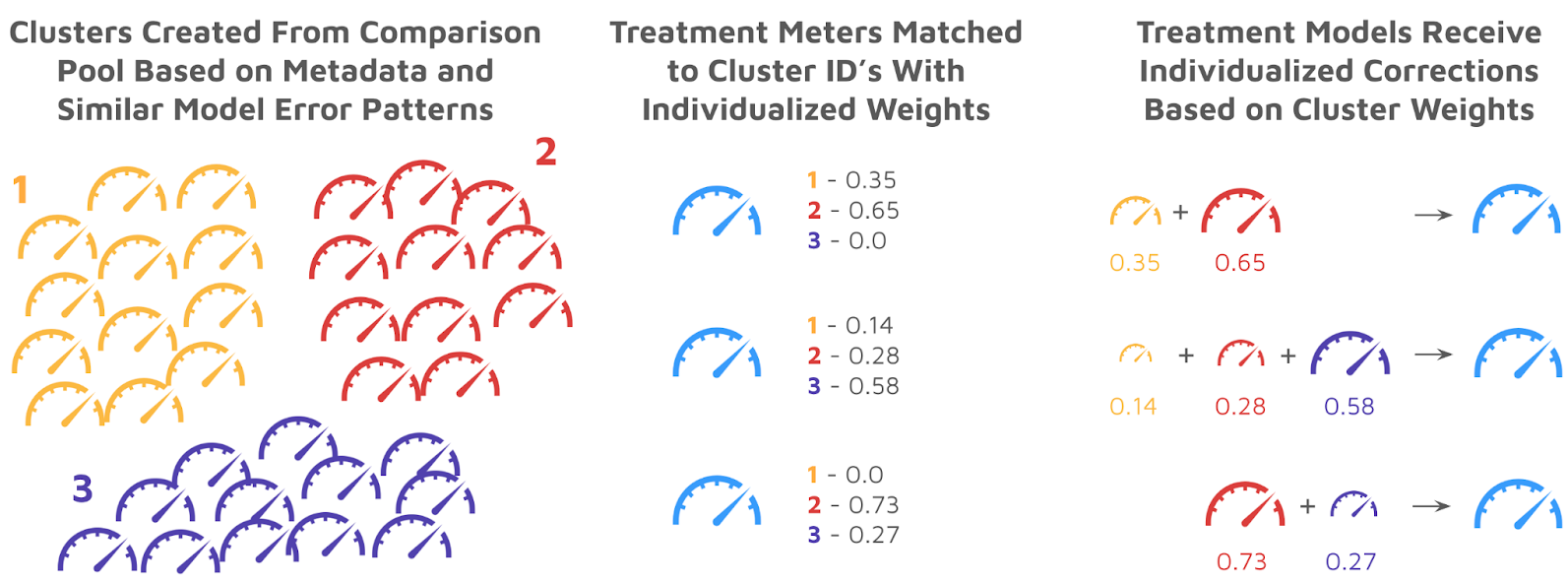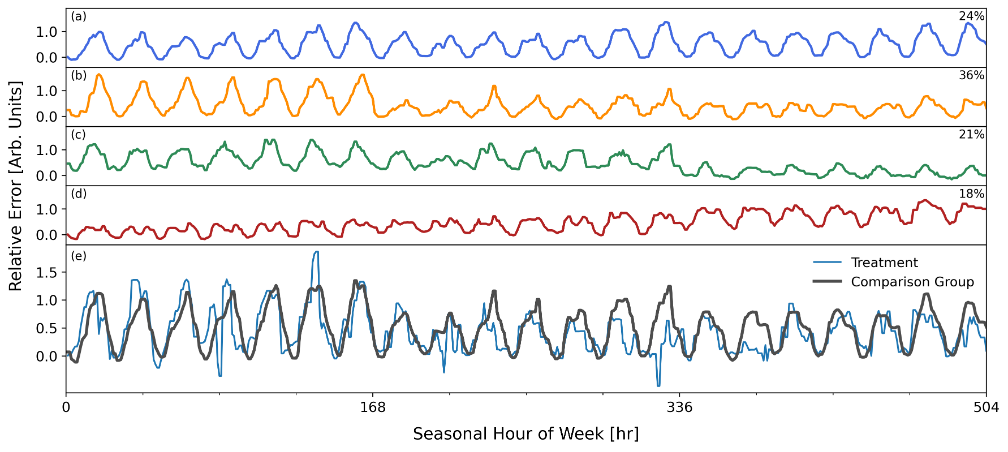|
Recurve is excited to announce GRIDmeter 2.0, a major advancement toward accurately measuring the net impact of virtual power plants, demand response, energy efficiency, controllable devices, and other demand-side energy initiatives. This new version of the open-source GRIDmeter comparison methods utilizes a suite of machine learning methods, including advanced machine learning (ML) clustering algorithms, to enable significantly more robust measurement of net grid impact for portfolios and individual sites. GRIDmeter 2.0 advances the state of the art for demand side resource measurement:
Increasingly accurate and transparent measurements of virtual power plants, energy efficiency, and demand response programs are critical to enable confidence in the resources, support grid integration, and provide fair compensation. With so many factors influencing energy use, it is critical to consider the broader population alongside the changes experienced by participating customers. Was a customer saving because of more efficient lighting or because retail business slowed down? Is the response to an emergency event because of a DR program, or would it have existed anyway because people heard Flex Alerts on the radio? To these ends, comparison groups generated by GRIDmeter 1.0 have been used successfully to measure dozens of demand-side programs, including energy efficiency, demand response, electrification, and electric vehicle charge-shifting initiatives. These measurements have proven effective even in extreme situations, such as COVID-19 and intense heat waves. GRIDmeter 1.0 utilized “Individual Meter Matching,” considered an industry best practice. In this method, a comparison group is chosen from non-participants that share important categorical characteristics with a corresponding treatment group subpopulation (solar PV, climate zone, business type, etc.). With the available treatment and comparison group subpopulations in place, the individual meter matching procedure then selects the specific comparison group based on load shape similarity between each treatment meter and every possible comparison match. With the comparison group in place, changes in the comparison group are then propagated into the treatment group counterfactual to remove non-programmatic effects, yielding the net impact of the VPP or program. While GRIDmeter 1.0 has proven very successful, Recurve has continued researching and testing new approaches that take advantage of modern machine learning and computational advancements and is proud to introduce Machine Learning (ML) Clustering, which improves several key aspects of comparison group selection and performance. GRIDmeter 2.0 utilizes a suite of machine learning techniques to create “clusters” of non-participant meters with similar profiles, and each treatment meter is assigned an individualized correction based on a weighted assignment of clusters. The next image gives an example of a treatment meter’s model error profile (bottom panel) and how the error patterns are matched by a weighted combination of clusters (top four panels). With the combination of clusters in place that best replicates the treatment meter’s baseline error profile, the comparison group corrections in the post-program period will have the greatest relevance. This process is done for every meter in the treatment group. The ML Clustering approach has several key advantages:
Through extensive testing, Recurve has optimized the GRIDmeter 2.0 ML Clustering algorithms and confirmed that the methods yield more accurate results with lower uncertainty than Individual Meter Matching. Recurve has updated GRIDmeter to include ML Clustering, and these methods are now available through the open-source GRIDmeter repository. We have already used these methods to make the first successful measurement of PG&E’s Pilot Plus/Pilot Deep (a pilot building upon the Energy Savings Assistance Program), an initiative that will rely heavily upon trustworthy measurements in order to evolve and optimize both customer experiences and beneficial grid impacts. The upgraded GRIDmeter 2.0 approach will be available to all Recurve customers — and as with many approaches, ML Clustering can continue to improve as we optimize with new datasets. We look forward to deploying GRIDmeter 2.0 to enhance the quality and reliability of our measurements and serve our clients best! Contact us to learn more.
0 Comments
|
Archives
March 2024
Categories |
|
©2020 Recurve Analytics Inc. "Recurve" is a trademark of Recurve Analytics Inc. All rights reserved.
Privacy Policy. Terms of Service. |




 RSS Feed
RSS Feed
